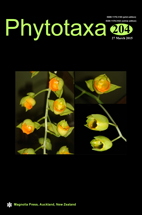Abstract
Continued work on the systematics of the genus Encephalartos has been conducted over a large area along the Mozambican coast to determine the infraspecific variation and taxonomic status of Encephalartos ferox populations. The northern extent of the species was also investigated based on anecdotal information that it might represent a new taxon. Several (45) vegetative and reproductive (ca. 40) characters were analysed and used to re-circumscribe E. ferox. Literature and iconographic citations are included, as is information on ecology, cytology and conservation as available. No specimens of E. ferox were located north of the Save River in the Sofala Province, Mozambique, and the northernmost population of the species was found to be anomalous. Accordingly a new subspecies, E. ferox subsp. emersus, is recognised based on its invariably emergent stems, shorter unarmed petiole length, shorter leaves, greater number and narrower leaflets (in seedlings as well) which are more closely spaced. Strobili and peduncles in subsp. emersus are shorter and narrower with strobili having a propensity towards yellow, while internally the megasporophylls are green, grading to white away from the outer surface. The IUCN Red List status is suggested as Critically Endangered A4d + B1a,b(v) + B2a,b(v), with the threat of illegal over-collection highlighted.

